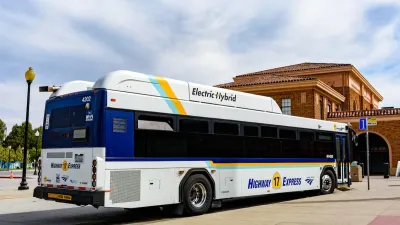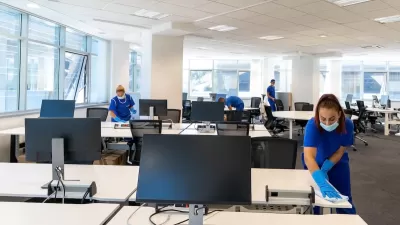Wendell Cox looks at commuting patterns, and finds that the old supposition that most commuters are going from suburban housing to urban jobs no longer holds water.
"One of the most enduring urban myths suggests that most jobs are in the core of metropolitan areas, making commuting from the far suburbs more difficult. Thus, as fuel prices have increased, many have expected that people will begin moving from farther out in the suburbs to locations closer to the cores. Indeed, in some countries, such as Australia, much of the urban planning regime of the last decade has been based upon the assumption that urban areas must not be constrained because the residents on the fringe won't be able to get to work.
Like many myths, this one has limited conformity with the truth. This can be seen even in New York, the New York metropolitan area (the combined statistical area), which is home to the second largest central business district in the country and by far the most well-developed transit system in North America. Yet, despite this, a close examination of work trip data from the 2006 U.S. Census American Community Survey shows a pattern of shorter work travel times for many of the most far-flung areas while those located closer to the core often experience longer commutes."
FULL STORY: Long Island Express: The Surprisingly Short Commutes of Suburban New Yorkers

Maui's Vacation Rental Debate Turns Ugly
Verbal attacks, misinformation campaigns and fistfights plague a high-stakes debate to convert thousands of vacation rentals into long-term housing.

Planetizen Federal Action Tracker
A weekly monitor of how Trump’s orders and actions are impacting planners and planning in America.

San Francisco Suspends Traffic Calming Amidst Record Deaths
Citing “a challenging fiscal landscape,” the city will cease the program on the heels of 42 traffic deaths, including 24 pedestrians.

Defunct Pittsburgh Power Plant to Become Residential Tower
A decommissioned steam heat plant will be redeveloped into almost 100 affordable housing units.

Trump Prompts Restructuring of Transportation Research Board in “Unprecedented Overreach”
The TRB has eliminated more than half of its committees including those focused on climate, equity, and cities.

Amtrak Rolls Out New Orleans to Alabama “Mardi Gras” Train
The new service will operate morning and evening departures between Mobile and New Orleans.
Urban Design for Planners 1: Software Tools
This six-course series explores essential urban design concepts using open source software and equips planners with the tools they need to participate fully in the urban design process.
Planning for Universal Design
Learn the tools for implementing Universal Design in planning regulations.
Heyer Gruel & Associates PA
JM Goldson LLC
Custer County Colorado
City of Camden Redevelopment Agency
City of Astoria
Transportation Research & Education Center (TREC) at Portland State University
Jefferson Parish Government
Camden Redevelopment Agency
City of Claremont





























